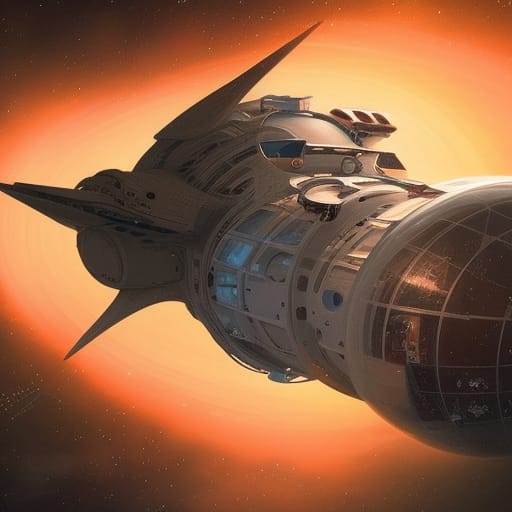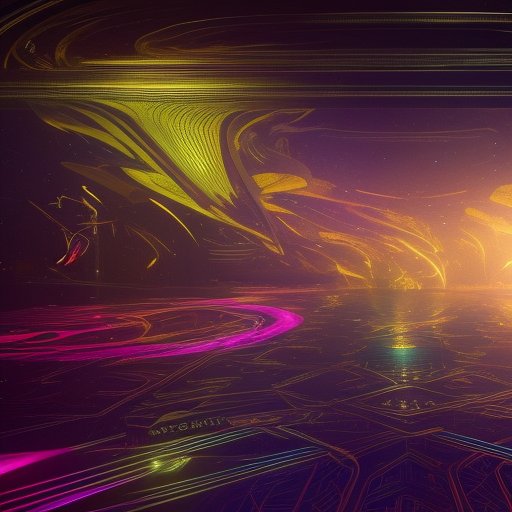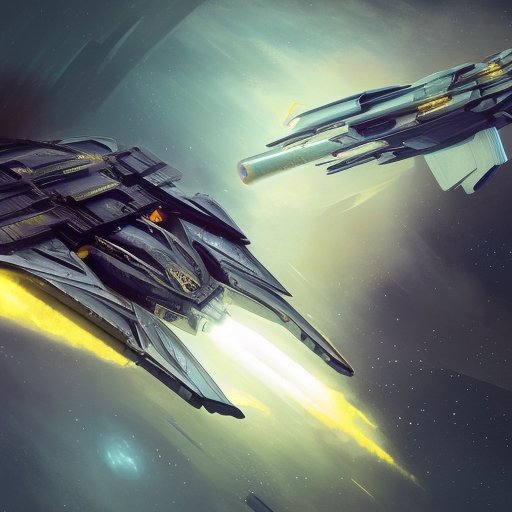
Buckle up, space cadets! The future of manufacturing in space has arrived with zero-gravity 3D printing. Imagine complex structures that once took months to create can now be printed in mere hours. These printers, designed to operate in zero gravity, allow for unparalleled flexibility and creativity in space. Using these 3D printers, astronauts can print spare parts, tools, and even habitats. But the benefits don’t stop there. Reduced costs and faster production times make space exploration more feasible than ever before. Challenges remain, such as developing new materials and improving printing speed. However, the potential for 3D printing in space is limitless. Get ready for a new era of space manufacturing, powered by zero-gravity 3D printing!
I. Introduction
As space exploration and colonization continue to expand, the need for advanced manufacturing techniques in zero-gravity environments becomes more pressing. Enter zero-gravity 3D printing: the futuristic technology that has the potential to revolutionize space manufacturing as we know it.

Unlike traditional 3D printers, which rely on gravity to deposit materials layer by layer, zero-gravity 3D printers use a range of advanced techniques to create complex structures in space. This includes extrusion-based printing, where materials are pushed through a nozzle to create intricate shapes, as well as powder-based printing, where layers of material are fused together using lasers or other forms of energy.
The benefits of zero-gravity 3D printing in space are numerous. With the ability to manufacture complex structures in space, astronauts can create tools, replacement parts, and even habitats for future space exploration missions. This reduces the need for costly resupply missions from Earth, allowing for more sustainable and cost-effective space exploration.
Of course, there are still many challenges that need to be overcome in order to make zero-gravity 3D printing a viable option for space manufacturing. For example, developing new materials that can withstand the harsh conditions of space, improving printing speed, and ensuring the safety of astronauts during the printing process are just a few of the hurdles that must be overcome.
Despite these challenges, the potential of zero-gravity 3D printing in space manufacturing is too great to ignore. As technology continues to advance and our understanding of space exploration grows, zero-gravity 3D printing could be the key to unlocking a new era of space exploration and colonization.
II. What Are Zero-Gravity 3D Printers
Zero-gravity 3D printers are the future of manufacturing in space. These printers work by melting a raw material, typically a polymer, and depositing it layer by layer to create a three-dimensional object. What sets zero-gravity 3D printers apart from their Earth-bound counterparts is their ability to print in a zero-gravity environment.

In a zero-gravity environment, the lack of gravity makes it difficult to manufacture objects using traditional methods. Materials can’t be poured or cast in molds, and it’s difficult to apply coatings or finishes. However, with zero-gravity 3D printers, these challenges can be overcome.
The printers themselves are designed to operate in a zero-gravity environment, with components such as the print head and extruder mounted on a robotic arm. This arm moves around the printing area, depositing the material in precise locations to create the desired object.
Zero-gravity 3D printers are also designed to be highly efficient, using minimal raw material and producing little waste. This is critical in space, where every resource is limited and must be used wisely.
One of the most significant advantages of zero-gravity 3D printers is their ability to create complex structures that would be difficult or impossible to manufacture using traditional methods. For example, a printed part can include internal cavities or intricate geometries that would be challenging to create with molds or other casting methods.
III. Benefits of Zero-Gravity 3D Printers
Creating structures and objects in space is a daunting task, but zero-gravity 3D printers have made it easier, faster, and more efficient. Let’s explore the benefits of using these printers in space manufacturing.

Firstly, zero-gravity 3D printers allow for the creation of complex structures that would be nearly impossible to manufacture using traditional methods. The printers can create intricate shapes and designs that would be too difficult to produce by hand, allowing engineers and astronauts to create objects that are tailor-made for space exploration.
Additionally, zero-gravity 3D printing can reduce the cost of space manufacturing. In the past, every tool and component needed for space missions had to be transported from Earth, adding to the overall cost of space exploration. But with 3D printers, astronauts can manufacture tools and replacement parts on the spot, reducing the need for costly resupply missions.
Zero-gravity 3D printing also enables faster manufacturing times, which is critical in space missions where time is of the essence. Instead of waiting for parts to be shipped from Earth, astronauts can simply print them out as needed. This can save valuable time and reduce the risk of mission delays.
Another benefit of zero-gravity 3D printing is that it can help to reduce the waste generated during space missions. In the past, any equipment or tools that broke or became obsolete had to be jettisoned into space, adding to the amount of space debris orbiting our planet. But with 3D printers, astronauts can simply print out new equipment, reducing the amount of waste generated and helping to keep space clean.
IV. Examples of Zero-Gravity 3D Printing Applications
Zero-gravity 3D printing has opened up new possibilities for manufacturing in space. Here are just a few examples of how this technology is being used today:

Tools and Parts: Zero-gravity 3D printers have allowed astronauts to manufacture tools and spare parts on-demand. This has been particularly useful on long-duration missions where resupply is not an option. For example, in 2014, NASA sent a 3D printer to the International Space Station (ISS) that was capable of printing over 20 different parts and tools.
Habitats: In the future, zero-gravity 3D printing may be used to create habitats for astronauts on the Moon or Mars. Companies like NASA and private space companies like SpaceX are currently exploring this possibility. The idea is to use the resources available on these celestial bodies to create habitats, rather than having to transport them from Earth.
Rocket Parts: Zero-gravity 3D printing can also be used to manufacture rocket parts in space. This is particularly useful for long-duration missions where resupply is not possible. In fact, in 2019, NASA successfully tested a 3D-printed rocket engine that was manufactured entirely in space.
Medical Supplies: Zero-gravity 3D printing can also be used to manufacture medical supplies in space. For example, in 2016, NASA sent a 3D printer to the ISS that was capable of printing a variety of medical supplies, including splints and casts. This technology could be particularly useful on long-duration missions where medical supplies may be limited.
Food: In the future, zero-gravity 3D printing may even be used to manufacture food in space. Companies like BeeHex are currently exploring this possibility, with the idea of using 3D printers to create customized meals for astronauts. Imagine ordering a pizza from a 3D printer in space!
These are just a few examples of how zero-gravity 3D printing is being used in space today. As the technology continues to improve, we can expect to see even more exciting applications in the future.
V. Challenges and Future Directions
Zero-gravity 3D printing is an incredible technology that has the potential to transform space manufacturing. However, there are still challenges that need to be overcome before it can be fully realized.
One of the biggest challenges is developing new materials that are suitable for zero-gravity 3D printing. Many of the materials used in traditional 3D printing are not suitable for use in space, as they may be affected by radiation or the extreme temperature fluctuations. New materials need to be developed that can withstand the harsh environment of space while still being able to be used in a 3D printing process.

Another challenge is improving the speed of zero-gravity 3D printing. Currently, the process is slow and time-consuming, which limits its usefulness in certain situations. Improving printing speed will allow for larger structures to be built more quickly, which will be especially important for the construction of habitats on other planets.
In addition, there is a need to develop more advanced zero-gravity 3D printers that can create more complex structures. While the current technology is impressive, it is limited in what it can create. Developing more advanced printers that can create intricate and multi-functional structures will greatly expand the potential uses of zero-gravity 3D printing.
Finally, there is the challenge of integrating zero-gravity 3D printing into existing space manufacturing processes. Many existing processes are designed around traditional manufacturing methods and will need to be adapted to incorporate zero-gravity 3D printing. This will require a significant investment in infrastructure and training for astronauts and engineers.
Despite these challenges, the future of zero-gravity 3D printing looks bright. With continued research and development, this technology has the potential to transform space manufacturing and even pave the way for colonizing other planets. The possibilities are truly endless.
VI. Conclusion
Are you ready to take space exploration to the next level? Zero-gravity 3D printing technology can help make it happen! Imagine being able to manufacture complex structures and tools in space, without having to rely on expensive and time-consuming shipments from Earth. With zero-gravity 3D printing, the possibilities are endless.

But we need your help to make it happen. As a sci-fi fan, you know that every great technological leap requires a dedicated community of innovators, enthusiasts, and pioneers. We need people like you to join the mission and help us push the boundaries of space manufacturing.
So how can you get involved? Start by learning more about zero-gravity 3D printing technology and its potential applications. Share this article with your friends and fellow sci-fi fans, and spread the word about the amazing things that are possible with zero-gravity 3D printing.
If you have a background in engineering, materials science, or other related fields, consider joining a research team that is working on developing new materials or improving printing speed. Or if you’re more of a hands-on person, consider volunteering for a space exploration program that is using zero-gravity 3D printing in their missions.
The future of space exploration and manufacturing is in our hands. Let’s work together to make it a reality. Join the zero-gravity 3D printing revolution today and be a part of the next great technological leap in space exploration!






